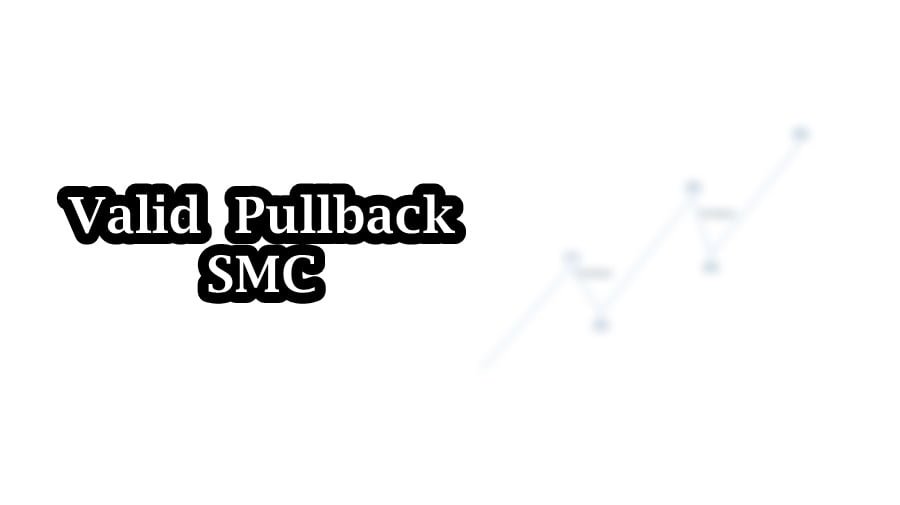
Table of Contents
ICT and SMC trading concept relies heavily on the concept of liquidity. Concept of Internal and External Range Liquidity is equally important in forex and other financial markets. In general, market must grab and sweep liquidity before break of structure or trend continuation.
This article explores core concept of Internal and External range liquidity, key zone and levels of IRL and ERL, and how to act when liquidity is grabbed.
Understanding Internal and External Range Liquidity
Before diving into the concept of liquidity, it is important to understand how and why price move. Price moves because of two simple reasons. The first one is to sweep buy side or sell side liquidity. The second reason is connected with correction phase of the market. In correction phase, market balance fair value gaps and collect all the pending orders waiting to be executed.
Another important concept is ICT Dealing range. Market moves by creating higher highs and higher lows (in uptrend) and lower lows and lower highs (in downtrend). Recent swing low and swing high is referred to as ICT dealing range. Within the market correction and balancing of fair value gaps takes places. All this happens before break of structure (BOS).
After all the analysis, ICT focuses on internal and external range liquidity. Internal Range Liquidity (IRL) refers to liquidity that resides within ICT dealing range. Internal range liquidity forms in different ways. It is possible that market form trading range within ICT dealing range. Fair Value Gaps are important. These areas are considered Important because there are order that act as pending orders (liquidity).
External Range Liquidity (ERL) refers to liquidity found outside the ICT dealing range (above the swing high and below swing low). Market moves toward external liquidity after clearing internal liquidity. External liquidity is generally targeted by smart money or large traders when market is ready to make a strong directional move.

Breakdown of Internal Range Liquidity (IRL)
Internal liquidity forms in different forms. The following are the scenarios a trader can look for in ICT dealing range.
- It is possible that market may start consolidation after creating new swing high or swing low. Institutions and Big money often establish accumulation and distribution schemes within the consolidation range. During this phase, both buyer and seller place their stop-losses at key levels. This creates liquidity on both sides. These accumulation and distribution schemes give institutions the reason to move the market in their favor. They gather huge positions in the market and trap retail traders.
- Market may create minor highs and lows (especially equal lows and equal highs). Retailers are trapped in those areas.
- Fair Value Gaps are especially focused by ICT traders. In Bullish Market, FVGs in discount zones are marked. Within the FVG, traders filter trade setup on smaller timeframes. In Bearish Market, FVGs in premium zone are marked. Order Block near the zone are considered as more reliable. If there is no reliable, trader refine trader on smaller timeframe.
Key Concepts of External Range Liquidity
In market structure, external range liquidity lies outside a well-defined ICT dealing range. ERL is used in identification of potential breakout or breakdown zones. Institutions target these zones to capture pending order and stop-loss orders. Break out or break down of the zone induces traders to enter in the market. The following are the concepts that should be remembered while analyzing market:
- Liquidity beyond ICT Dealing Range: Liquidity resides outside the dealing range. The swing high and swing low are the points that are targeted by institutions. There is a perception that retail traders consider them as important zones. Institutions target these zones to capture liquidity. Liquidity can be in the form of pending orders and stop-loss orders. For Long and Short positions, institutions target swing high and swing low.
- Liquidity hunts: SMC and ICT traders actively seek to trigger the stop-loss orders placed by retail traders at these external levels. This action is often referred to as a liquidity hunt or stop raid. When price approaches external liquidity, smart money drives it just beyond the swing high or low, triggering stop-loss orders and generating liquidity that smart money can absorb for its positions.
- Premium and Discount zone: External range liquidity is often connected premium and discount. Prices above key swing high are conceived as premium. It indicates sharp reversal to discount before trend continuation. Prices above key swing low are considered as discount. It shows the possibility that market might be more inclined to continue trend after a liquidity grab.
This concept helps understand where smart money is likely to drive price. By focusing on liquidity pools outside of established ranges, traders can anticipate breakouts, false breakouts, and reversals.
Price Movement and Liquidity
Price movements are fueled by liquidity grabs and liquidity sweeps. Liquidity is captured in different way. One of the common perceptions is that price captures external liquidity then moves to internal liquidity zone. Then from internal liquidity zone to external.
For this market structure analysis should be accurate and a trader should be aware about the price movement from internal to external and then external to internal.
ICT daily Bias and Trade setup
Internal and external range liquidity is used in ICT daily bias. Understanding market movement within the zones is key to identify market bias. The goal is to predict whether price is more likely to continue trending or reverse after capturing certain liquidity levels.
- First step is the analysis of market structure and identification of ICT dealing range.
- Secondly, a trader must identify internal and external range liquidity areas. In order to identify the daily bias, a trader must analyze the daily or weekly chart to determine the location or IRL and ERL relative to present market price. IRL can be Fair value gaps, order blocks and minor swing highs and swing lows. ERL is typically found at major swing high and swing low.
- Thirdly, determine the potential bias. Once the key levels are identified, next step is to determine potential bias of a market. If the price takes IRL first and the ERL is resting above, the bias should be bullish. This is because the price will likely move to grab the external liquidity positioned above, continuing the bullish trend. Conversely, if the price takes IRL first and the ERL is resting below, the bias should be bearish. In this case, the price is expected to move downward to take out the external liquidity positioned below, signaling a potential bearish trend.
- Lastly, two possible scenarios can be considered. In a Bullish market, if price sweeps the external range liquidity but closes below the ERL, this signals potential bearish reversal. It is possible that market may fill the unfilled fair value gap. This suggests that liquidity grab above the ERL is not enough to sustain bullish momentum. On the other hand, if price closes above the level, the possibility is either a continuation of trend or consolidation around ERL.
Here is the example of the trend continuation:

Final note
In conclusion, identifying the ICT daily bias by tracking internal and external range liquidity helps traders anticipate market direction. Properly recognizing how price interacts with these liquidity levels enables traders to position themselves effectively in line with the broader trend or potential reversals.
Risk Disclosure: Trading in financial markets involves significant risk. Price action strategies based on ICT concepts require a solid understanding of market dynamics and risk management. Traders may experience substantial losses, and it’s essential to use these strategies with caution, always utilizing appropriate stop-losses and position sizing to mitigate risk.
Frequently Asked Questions (FAQs)
What is Internal Range Liquidity?
IRL refers to the liquidity reside within a defined price range (ICT dealing range). It typically forms between swing highs and swing lows. It can be in the form of FVGs, Order Blocks, minor swing high and swing low.
What is External Range Liquidity?
ERL refers to the liquidity beyond an ICT dealing range. External Range liquidity is usually found above swing highs and swing lows. These are the key levels where stop-loss and pending orders reside. This makes the areas attractive target for smart money.
What happens after price takes External Range Liquidity (ERL)?
After price takes ERL, two scenarios may occur:
Bearish Reversal: If price sweeps ERL and closes below with a reversal in lower timeframes, it may indicate a bearish reversal.
Bullish Continuation: If price closes above ERL without reversal signs, the trend may continue upward, or the market may consolidate before the next move.
What is the significance of IRL vs. ERL?
ERL is more critical because it lies outside the current trading range and aligns with the major trend. IRL represents retracement areas, while ERL indicates zones of significant liquidity hunts or breakout potential.
I’m Abdullah Shah, a content writer with three years of experience in crafting engaging and informative content. My background in market analysis complements my work, allowing me to create content that resonates with audiences. I’m also a seasoned practitioner in the forex and crypto markets, with a strong foundation and deep interest in finance. My passion for the financial world drives me to produce content that is both insightful and valuable for those interested in understanding market trends and financial strategies.





